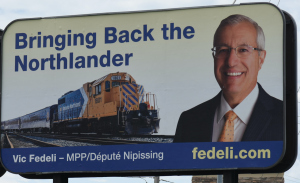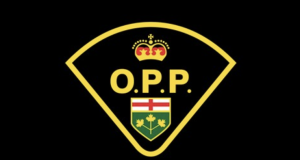 The American industrialist and business magnate Henry Ford once responded “You can’t build a reputation on what you are going to do” when asked about his professional achievements.
The American industrialist and business magnate Henry Ford once responded “You can’t build a reputation on what you are going to do” when asked about his professional achievements.
It’s a fitting analogy to describe how Parliament Hill and Queen’s Park continue to sputter when attempting to run, re-establish or regulate public transportation.
For decades, numerous studies were published on how to re-imagine the way people travel across the country and the province.
Whether by bus, plane, train or even highway expansion, politicians of all stripes claim they want to reduce gridlock in urban areas and improve mobility in rural and remote regions.
Yet, for all the initial hype surrounding these government-led initiatives, progress has often been sluggish. In some instances, projects have stalled or were outright abandoned.
As a result, there remains:
- Unprecedented delays and congestion at Pearson International Airport
- Endless debate on High-speed versus High Frequency Rail
- Severely late intercity trains
- Impassable roads due to collisions and weather conditions
- Many setbacks on Toronto’s Eglinton Crosstown LRT, Ottawa’s O-Train and the now defunct London GO Train pilot
- Increased isolation in Northern Ontario due to reduced or discontinued motor coach, train and air services.
Who’d have thought getting around would be so difficult and complicated, a quarter of the way into the 21st century?
It’s been a rocky few months for the nation’s passenger rail carrier, VIA Rail Canada.
Much was written about their Montréal-Québec City customers being stranded for ten hours, and the parliamentary committee summoned to get to the bottom of things.
It’s ironic, because the Federal government doesn’t bat an eye whenever The Canadian — VIA’s Toronto to Vancouver service — encounters similar delays through Northern Ontario, or when the Sudbury-White River train is cancelled at a moment’s notice, without alternate transportation.
The company has more pressing concerns though: speed restrictions imposed by Canadian National Railway on its new Siemens Venture fleet.
It’s kind of an existential crisis because these units are supposed to make train travel more dependable.
I hope Metrolinx and Ontario Northland pay close attention to the lawsuit filed by VIA, because this might impact redeployment of the Northlander.
Despite promising billboards, platform and shelter announcements between Matheson and Temagami, and ongoing reconstruction of the North Bay rail yard bypass, the Siemens train sets ordered by the province will face the same issues as VIA if they must also slow down at each railroad crossing CN owns all the way to Toronto.
Several questions remain unanswered:
- When in 2026 will the Northlander return?
- When does construction begin on the Timmins-Porcupine station, and the platforms and shelters between South River and Washago?
- Will there be access to washroom facilities?
- Will passengers seamlessly transfer between ONR trains, busses and local transit?
- How scalable is the service?
Earlier in 2024, the Township of Brock produced a report detailing the need for a stop in the community of Beaverton.
Consider there’s a 110 km gap between the two nearest stations (Gormley and Washago), it seems like an odd decision to bypass the fourth largest catchment area on this route — roughly 26 000 people within a 15-minute drive of Beaverton.
Moreover, why doesn’t The Canadian stop here, at one of the GO stations north of Toronto, and at other reasonably sized communities further up the line (Bala and French River)? These are missed opportunities.
Transportation in this country is at crossroads.
Highway closures are all too common. With few, if any, alternate routes in Northern Ontario, motorists and bus passengers alike are left stranded.
New trains that don’t live up to their potential, antiquated ones that fail on a somewhat regular basis or that are late erodes confidence in VIA Rail.
Flights outside of the big cities are often limited and prohibitively expensive for most individuals on a budget.
Prime Minister Trudeau and Premier Ford each have an opportunity to steer Canada and Ontario in the right direction by putting in place proper transportation policies, and providing the necessary tools and resources to VIA Rail and Ontario Northland.
Their decisions will ultimately determine whether public transit has a bright or gloomy future.
Choose wisely.
Éric Boutilier,
Northern Tracks Blog
- Letter to Doug Ford – Another Devastating Tragedy on Northern Ontario Highway - December 23, 2025
- NAPS lay charges in historic child abuse investigation - December 23, 2025
- Federal Offender arrested in Timmins - December 23, 2025
 Wawa-news.com You can't hear the 'big picture'!
Wawa-news.com You can't hear the 'big picture'!
